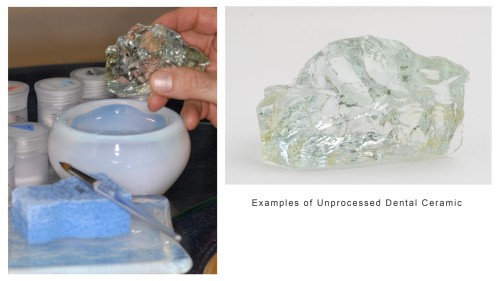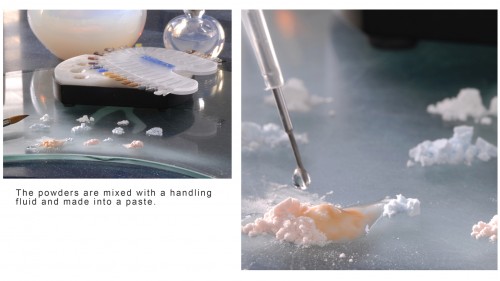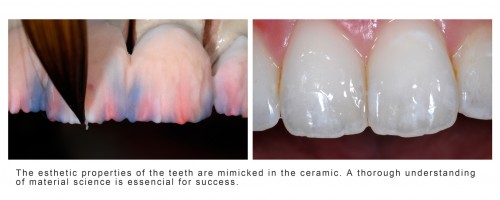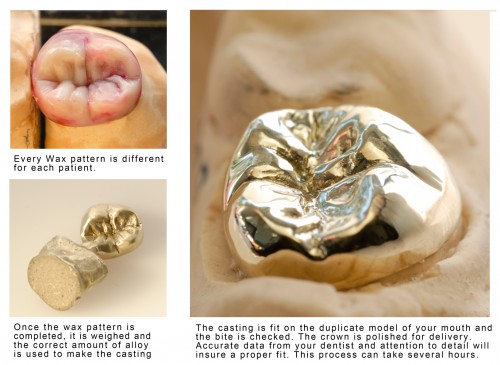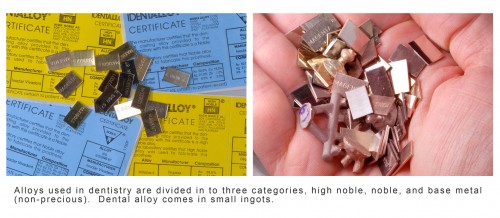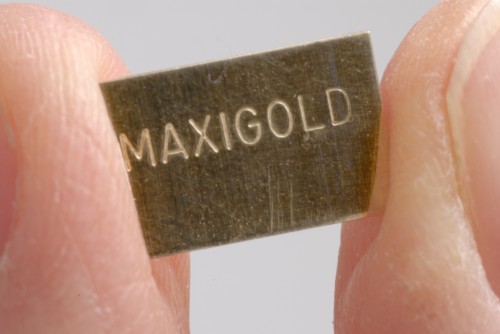pursuit of perfection
Anyone that has had a meal prepared by a master chef can attest to the joy of the experience. The flavor and the esthetic are apparent. What is not immediately apparent are the ingredients used and the time and study required to produce such a meal. To reach that level of mastery requires years of study and practice. It also requires an endless pursuit of perfection. Unfortunately, aside from the memories, a meal provided by a master chef is over when you finish eating. A restoration created by a master level dental technician is required to last for years, decades, or possibly a lifetime. Making these restorations requires equal amounts of artistic skill, material knowledge, and passion.
Each restoration requires hundreds of steps combining many different materials such as plaster, stone, ceramics, alloys, and many others. A dental restoration is small but the level of skill and knowledge required to produce this tiny object is remarkable. Not only that, but the standard level of perfection commonly accepted in dentistry is 100 microns. What is 100 microns? It is the width of a human hair. The dentist and dental technician work with an expectation of 100 micron accuracy. The dentist needs to accomplish this within the confines of your mouth. It is a remarkable achievement.
If you were ever lucky enough to visit the kitchen of a master chef (and thanks to television that is possible for more people) you can appreciate the level of skill and knowledge that goes in to each meal. Most patients in the US do not get to see the inside of a dental laboratory run by a master level dental technician. Hopefully this explanation will increase the appreciation for what the dental technician brings to the dental team and how the patient benefits having us on that team.
Not all dental restorations are made of ceramic materials. For single restorations, the gold standard for decades has been…gold. Among other things, gold is chosen for its bio-compatibility, ductility, and malleability. When done properly, gold can be made with the much desired 100 micron fit, that’s where the ductile and malleable properties come in handy. Gold is also kind to soft tissue (the pink stuff) and hard tissue (the white stuff). Gold wears very similarly to natural dentition. If you rub a rock against a piece of chalk, guess which one will abrade more quickly? If you rub a natural tooth against a gold tooth they will abrade similarly. Abrasion is an important factor for material choice in dental restorations. If done properly, a gold restoration can last for decades. Pure gold is too soft, so it is alloyed with other metals to make it work better for dental crowns. In most cases the gold alloy is used as a framework or coping, then is usually covered by porcelain and sometimes resin.
Alloys used in dentistry are divided in to three categories, high noble, noble, and base metal (non-precious). Each category or classification has specific characteristics and properties. There are hundreds of options for each classification of alloy and they will vary greatly in quality and price. The alloy is chosen for the properties required for each patient and each tooth. The master level technician can tell you what is in each alloy and why their properties are favorable for your restoration. The distinction between high noble and noble alloys is based on the amount of precious metal contained in the alloy. More information can be found on the identalloy website. http://www.identalloy.org/
What are the drawbacks of gold?
The cost of the gold is a big factor, especially these days. The market price for precious metal is dependent on sources outside of dentistry. Also the metallic color of gold has fallen out of favor. Consideration should be given to the longevity of gold alloy.

